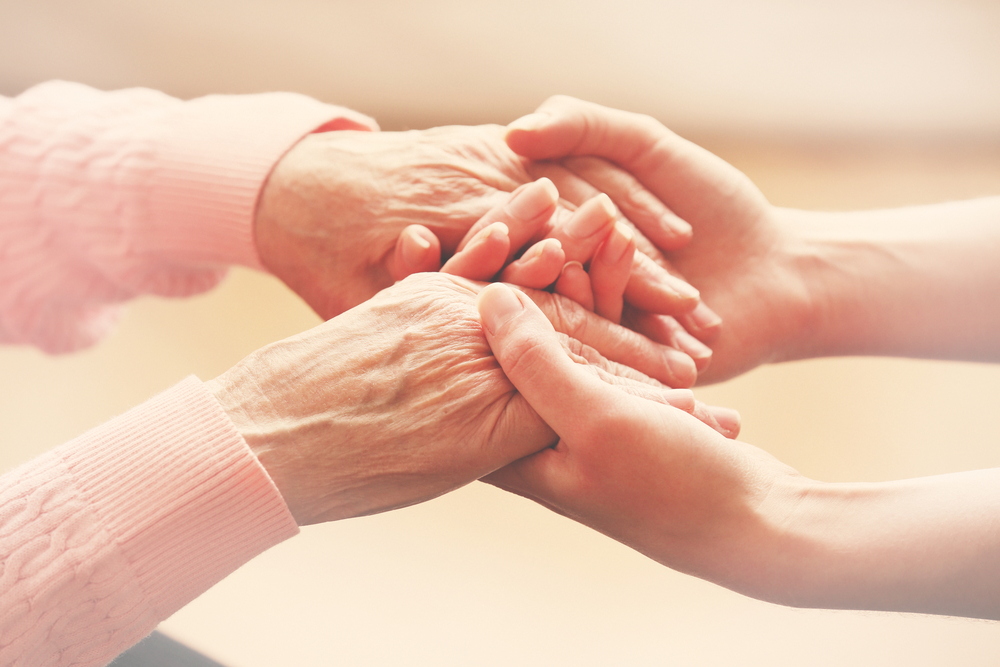
When you’re caring for an older adult, caregiver stress is part of the job.
That’s why it helps to have a long list of ways to cope and get relief. You’ll always be able to find an option that works for the situation you’re in at the moment.
The Rising Spoon has a great article that shares over 30 helpful stress relief tips. From these, we selected the top 15 stress relief tips that are most useful and realistic for busy caregivers.
We’ve also added extra ideas and resources especially for caregivers to make it even easier to benefit from these stress relief strategies.
15 quick tips for managing caregiver stress
1. Take slow, deep breaths
One of the fastest ways to calm down and relieve anxiety is to breathe deeply and mindfully. Taking slow, deep breaths quickly shifts your body out of stress mode and allows you to relax.
Breathe in through your nose and out through your mouth. This gets more oxygen into your blood and gives you something concrete to focus on.
We recommend a free mobile app called Breathe2Relax that uses visual cues to help you breathe at a slow, steady rate.
2. Use aromatherapy
Smells can instantly trigger significant memories and are a powerful way to affect the body’s nervous system.
For example, a research study showed that lavender essential oil can have a calming effect similar to anti-anxiety medications.
Suggestions:
- Use a diffuser to scent the air with relaxing essential oils
- Place a drop of essential oil in your hands, rub your palms together, cup them to your face and inhale
- Put drops of essential oil on a few cotton balls in a dish to diffuse the scent
3. Drink calming herbal tea
Sipping a caffeine-free herbal tea is a wonderful way to take a break and rehydrate your body too. Some calming herbs like mint, lemon, or ginger can even do double duty as aromatherapy.
We love Lemon Balm, Chamomile Lemon, Cup of Calm, Ginger Chamomile, Cinnamon Stress Ease, Turmeric Ginger, and Peppermint.
4. Meditate or pray
Meditation is excellent because it’s free, can be done anywhere, and has been proven to reduce stress. If you’re religious, prayer works in a similar way.
Studies show that meditation reduces blood pressure, improves immune function, and increases the ability to concentrate. It’s also efficient – you can get the benefits in just a few minutes a day.
We recommend a free mobile app called Calm.com that helps you relax with meditation in just 2 minutes. If that one isn’t your cup of tea, we’ve got 5 additional meditation app recommendations.
5. Release tension with exercise
Exercise is an excellent way to relieve tension, boost mood, and improve both physical and mental health.
It helps you burn off nervous energy, do something that’s just for you, and focus on something positive. Regular exercise also helps you sleep better.
You don’t need to spend hours at the gym to get the benefits, even a 5 minute workout makes a real difference. We’ve even created a gentle, super-efficient 4 minute workoutthat’s perfect for caregivers.
6. Talk with a trusted friend
Connecting with supportive people that you trust is another good way to reduce stress.
You’ll be able to vent your frustrations, know that you’re not alone in the world, and talk about something other than your older adult.
Meeting in person is ideal, but phone or video chat work well too. In a pinch, texting back and forth is still helpful.
7. Practice gratitude
Thinking about the things you’re grateful for helps you notice the good things in your life, no matter how small or big they may be.
Getting into a habit of gratitude helps you look on the bright side more often and adds a new perspective. Instead of focusing on the negative aspects of life, it will be easier to balance things out with a dose of the positive.
We’ve got suggestions for how to create a gratitude calendar, 5 simple ways to practice gratitude, and a 21-day gratitude challenge.
8. Listen to music
Music is an amazing way to improve your mood.
Whether you like to sing and dance to energetic tunes or relax with soothing classical or jazz, turning on some music is a sure way to help you de-stress.
Create a playlist on a free online music service like iHeartRadio, Spotify, or Pandora.
9. Go outside
Spending time outside, breathing fresh air, and looking at the natural scenery is a simple, but effective way to reduce caregiver stress.
Studies have shown that spending time in nature reduces the level of stress hormones, boosts the immune system, reduces anxiety and depression, and more.
10. Massage tired muscles
Caregivers often hold stress in their neck and shoulders.
The next best thing to an in-house masseuse is to use a foam roller, massage therapy ball, or even a regular tennis ball to massage those knots right out of your tense muscles.
11. Stretch or do yoga
Something as simple as stretching once or twice a day can relieve a lot of tension.
Do a few stretches at your desk, a 5 minute yoga stretching routine, or treat yourself to a relaxing 20 minute beginner yoga session.
12. Do something creative
Take a break from reality once in a while and focus on a creative project like painting, writing, photography, gardening, cooking, coloring, crafting, or knitting.
This takes your mind away from thoughts of caregiving and directs your energy toward something positive, fun, and productive.
13. Do a brain dump
If your mind is spinning with to dos, worries, reminders, and errands, take a moment and write it all down.
Get everything that’s bouncing around your brain out onto paper so you won’t feel like you need to remember it all anymore. That definitely takes a load off your mind!
14. Watch or read something that makes you laugh
Sometimes you just need a good laugh. Read a funny book, browse the cartoons in the paper, or watch an amusing video. We love funny animal videos like this one.
15. Take a spa-like bath or shower
A hot bath or shower is a refreshing way to start the day and a soothing way to unwind at night.
Take the relaxation factor up a notch by adding magnesium flakes or epsom salts and some essential oils or scented bath salts.
Bathing with magnesium is said to soothe sore muscles, reduce stress, and improve circulation. This is easiest in the bath, but you might not have time to clean the tub and have a soak.
For a quick spa-like experience, run the shower with the drain stopped and let everything dissolve at your feet, creating a detox foot soak and scented steam (but make sure the shower floor isn’t slippery). Or, try using a magnesium spray like this oneor this simple DIY version.
DailyCaring.com








